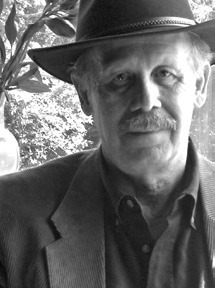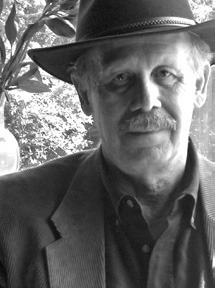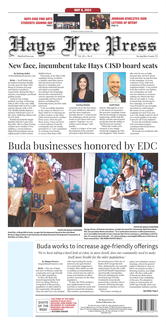
Eighty-eight thousand paying customers packed the Astrodome on Mar. 3, 1974 for Elvis Presley’s two sold-out performances, his last at the Houston Livestock Show and Rodeo.
Eighty-eight thousand paying customers packed the Astrodome on Mar. 3, 1974 for Elvis Presley’s two sold-out performances, his last at the Houston Livestock Show and Rodeo.
“He went off to Texas and came home famous,” Elvis’ mother once marveled early in her son’s incredible career. The Lone Star State was not only his launching pad to stardom, but also where the King of Rock and Roll got his second wind.
Elvis was fresh out of high school and just 19 years old, when he signed on as a regular with the “Louisiana Hayride,” a popular country music radio program broadcast from Shreveport to loyal listeners in 13 southern states. Unlike the purists at the “Grand Ole Opry,” who snubbed the newcomer after his one and only appearance, the “Hayride” warmly welcomed the white boy from Memphis who sang black rhythm and blues.
Elvis faithfully fulfilled his Saturday obligation in Shreveport and spent the rest of the week looking for work in Texas. A good night’s take in those days was $75, which had to be split three ways after gas and expenses, but he gladly would have performed for free.
In Gladewater Elvis sang his heart out from the back of a flat-bed truck on a baseball diamond, while an oil camp recreation hall near Hawkins put a roof over his head. The earliest known film footage of the future musical monarch in action was shot at Magnolia Gardens in Houston.
Between October 1954 and early 1956, Elvis played nearly 200 gigs in 57 Texas towns. Buddy Holly and the Crickets were the opening act for several engagements at Fair Park Auditorium in Lubbock, and the rising star made two stops in 1956 at Waco’s Heart O’ Texas Coliseum. His Fort Worth venue was the old Cowtown Coliseum, site of the world’s first indoor rodeo in 1908.
By the time Elvis returned to Houston in June 1956 for a standing-room-only encore at the City Auditorium, Heartbreak Hotel and an April guest shot on the “Ed Sullivan Show” had made him a nationwide sensation. Four months later, screaming fans filled the Sam Houston Coliseum to the rafters for his two high-energy shows.
A Texas songwriter contributed the breakthrough ballad Heartbreak Hotel. Mae Boren Axton, born in Bardwell and raised in Fort Worth, was inspired by a suicide’s farewell note that contained the phrase “I walk a lonely street.” Elvis achieved the unforgettably eerie effect that gave the melancholy song such a unique sound by recording it in a stairwell.
Rock and roll was controversial in those days, satanic music according to strait-laced critics, and the swivel-hipped singer with the seductive voice was the devil’s disciple. Some communities took stern and sometimes bizarre precautions to protect impressionable youth. In San Antonio, for example, rock and roll was banned from jukeboxes at public pools to keep the kids from dancing together in swimming suits.
Dallas police were out in force for Elvis’ 1957 concert at the Cotton Bowl, and hysterical young women kept them busy. Many had to be peeled off the eight-foot fence surrounding the stage, while others fainted from the excitement and had to be carried to first-aid stations.
For his Hound Dog finale, Elvis jumped off the stage and got down on all fours on the football field. To the delight of the crowd and the horror of the cops, he grazed on the grass to the refrain of his canine theme song.
Elvis received his draft notice the week before Christmas in 1957. He rejected special treatment, that would have let him spend his enlistment entertaining the troops, in favor of serving his country as an ordinary soldier.
Private Presley was sent to Fort Hood for basic training and later lived for six months in a modest frame house off base. When Gladys Presley took sick on a visit to Killeen, Elvis drove his mother to Temple and put her on a train back to Memphis. But she died within the week, and her devoted son never got over the loss.
During the 1960’s, the only place millions of Elvis fans could see their idol was at the local picture show. But his film career gradually ran out of gas, and “Change of Habit” released in 1969 was his 31st and last movie.
The next year, the Houston Livestock Show and Rodeo offered Elvis the much-needed opportunity to shake off the road rust and get back in the touring saddle. But when only 16,000 showed up for the Friday matinee, the crestfallen crooner feared the worst.
That evening Elvis looked out his hotel window at the traffic jam clogging every asphalt approach to the Astrodome. “Well, I’ll be damned!” he declared with a giant grin. “I guess I still got it after all.” He sure did as his six shows drew 207,000 to the Dome.
Elvis Presley played his last date in the Lone Star State at Memorial Auditorium in Austin on Mar. 28, 1977. Five months later, the King was dead at 42 — the exact age that he had fatalistically predicted for so long.
Take your pick of “Depression-Era Desperadoes,” “Blood and Oil,” “Murder Most Texan,” “Unforgettable Texans” and “Texas Entertainers.” Mail your check for $24.00 each to Bartee Haile, P.O. Box 130011, Spring, TX 77393.












